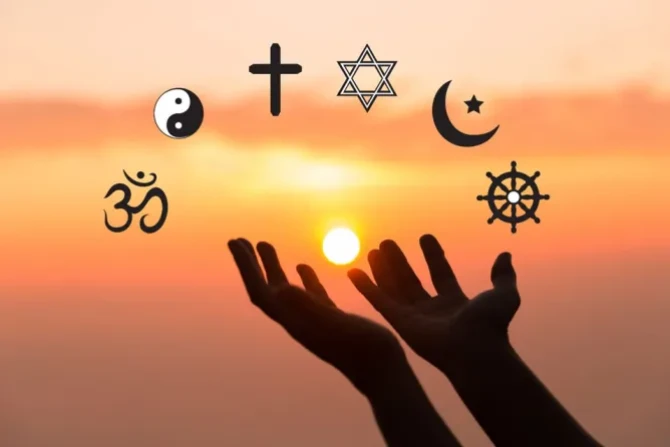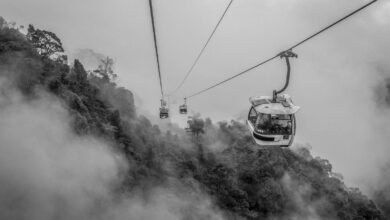
Malaysia is a multicultural nation characterized by its diverse religions and languages. This vibrant tapestry of beliefs and languages not only enriches the Malaysian identity but also enhances the experiences of visitors. Here’s a closer look at the major religions and languages that shape Malaysia’s unique cultural landscape.
Religions in Malaysia
1. Islam
- Official Religion: Islam is the official religion of Malaysia, practiced by approximately 60% of the population, predominantly among the Malay ethnic group.
- Cultural Significance: Islamic teachings and values are woven into the fabric of Malaysian society, influencing laws, customs, and daily life. Key Islamic festivals, such as Eid al-Fitr and Eid al-Adha, are widely celebrated, and Friday is designated as the weekly day of prayer.
- Religious Diversity: Malaysia is home to a variety of Islamic traditions, including Sunni and Shi’a Islam, with Sunni Islam being the most prevalent. Many Malaysians engage in communal prayers and participate in religious classes.
2. Buddhism
- Population: Buddhism is the second-largest religion in Malaysia, practiced by about 19% of the population, particularly among the Chinese community.
- Cultural Presence: Buddhist temples, often adorned with intricate architecture, are common throughout the country. Major festivals like Chinese New Year and Wesak Day are celebrated, showcasing the intermingling of cultural and religious practices.
- Theravada and Mahayana: The two main branches of Buddhism present in Malaysia are Theravada, practiced primarily by the Thai and Burmese communities, and Mahayana, predominantly followed by the Chinese.
3. Christianity
- Population: Christians make up about 9% of the Malaysian population, with both Catholic and Protestant denominations represented.
- Cultural Integration: Churches can be found in urban areas and serve as community centers for worship and social activities. Major Christian festivals like Christmas and Easter are celebrated with enthusiasm.
- Ethnic Diversity: The Christian community in Malaysia is diverse, comprising indigenous groups, Chinese, and Indian Christians.
4. Hinduism
- Population: Hinduism is practiced by around 6% of the population, mainly among the Indian community.
- Cultural Significance: Temples are significant cultural landmarks, and festivals like Deepavali and Thaipusam are celebrated with vibrant processions and rituals.
- Cultural Exchange: Hindu practices often blend with local customs, reflecting Malaysia’s multicultural nature.
5. Other Religions
- Folk Religions and Beliefs: Alongside the major religions, folk beliefs, and practices are prevalent, particularly among indigenous communities. Animism and ancestral worship are commonly observed in rural areas.
- Sikhism and Taoism: Small communities of Sikhs and practitioners of Taoism add to the religious diversity of Malaysia, contributing to the nation’s rich cultural fabric.
Languages in Malaysia
1. Malay Language
- Official Language: The Malay language, or Bahasa Malaysia, is the official language of Malaysia and serves as a unifying medium of communication for the diverse population.
- Linguistic Features: Malay is an Austronesian language and uses a Latin-based script. It is relatively easy to learn, with straightforward pronunciation and grammar rules.
- Regional Dialects: Various dialects of Malay are spoken across different states, reflecting local cultures and influences.
2. English Language
- Common Usage: English is widely spoken and serves as a second language for many Malaysians, especially in urban areas and among the younger generation. It is used in business, education, and tourism.
- Bilingual Signs: In major cities, public signs and announcements are typically bilingual, with English prominently featured, making it accessible for tourists.
3. Minority Languages
- Chinese Dialects: Due to a significant Chinese population, several Chinese dialects, including Mandarin, Cantonese, and Hokkien, are commonly spoken, particularly in areas with large Chinese communities.
- Indian Languages: Tamil is the most widely spoken language among the Indian community, alongside Punjabi and Malayalam.
4. Indigenous Languages
- Diverse Heritage: Malaysia is home to numerous indigenous groups, each with its own language. These languages, such as Iban, Kadazan, and Bidayuh, reflect the cultural heritage of Malaysia’s indigenous communities.
- Cultural Preservation: Efforts are ongoing to preserve these languages and promote cultural identity among indigenous populations.
Conclusion
Malaysia’s rich cultural diversity is reflected in its religions and languages, which play a significant role in shaping the nation’s identity. Islam stands at the forefront, influencing social norms and community life, while Buddhism, Christianity, Hinduism, and other beliefs enrich the cultural landscape. The Malay language serves as a unifying force, with English and various minority languages facilitating communication in this multicultural society. Understanding these elements provides valuable insights into Malaysia’s unique cultural identity, making it an enriching experience for both locals and visitors.



